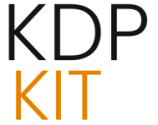The Unseen Crisis: Why Synthetic Content, Not Censorship, Poses the Bigger Threat to Books

The contemporary discourse surrounding literature is often dominated by narratives of book bans, challenges to curriculum, and visible acts of cultural restriction. Yet, as of late 2025, a far more pervasive and systemic threat is quietly eroding the foundations of the literary ecosystem: the sheer, unmanaged proliferation of technologically derived synthetic content. This technological disruption, coupled with new commercial models for accessing academic knowledge, presents a complex crisis that challenges the very value proposition of human authorship and intellectual property in the digital age. The battleground has shifted from the library shelf to the digital distribution pipeline, making quality erosion and market saturation the more significant, immediate danger to the future of the book.
Emerging Technological Disruptions in Publishing
The digital publishing landscape is currently contending with a technological deluge—an unprecedented influx of content generated, or heavily augmented, by artificial intelligence tools. This surge is not a distant concern; it is an active crisis that is overwhelming established quality control mechanisms across self-publishing and distribution channels.
The Proliferation of Synthetic Content and Quality Erosion
The ease with which artificial intelligence can now generate serviceable text and images has led to an exponential increase in digital submissions, particularly through self-publishing avenues. This flood of auto-generated material threatens to dilute the discoverability and perceived value of genuine human authorship. In a market saturated with easily created simulacra, discerning the valuable from the derivative becomes an almost impossible task for the average reader.
The system is already buckling under this volume. In a highly visible response to the deluge of suspected AI-written novels, Amazon’s Kindle Direct Publishing (KDP) platform implemented a submission volume limitation as of late 2023, which remains in place and is being actively monitored in 2025, restricting authors to a maximum of three titles per day to curb abuse. This policy change illustrates a major retail infrastructure struggling to manage the output of its own digital capabilities. Furthermore, in 2025, other key distribution partners, including **Barnes & Noble and IngramSpark**, have followed suit by creating stricter policies designed to curb the relentless rise of AI-generated books.
Compounding the problem is the profound ethical and legal quagmire surrounding the training data itself. The foundation of these powerful AI models rests upon vast corpuses of copyrighted material, often ingested without explicit consent or compensation to the original creators. This practice has ignited high-profile litigation that continues to shape intellectual property law in 2025. Landmark cases are currently testing the boundaries of fair use. For instance, in mid-2025, a federal judge in California ruled that Meta’s use of copyrighted books to train its Llama models constituted fair use due to its “transformative nature,” though this ruling is not a universal precedent. Conversely, other high-stakes lawsuits continue to advance: authors have brought new suits against Apple for allegedly training models on pirated books, and Salesforce is facing a proposed class action over the use of copyrighted books in its training datasets. Even as some companies like Anthropic settled for significant sums, such as a reported $1.5 billion, the core question of compensating creators for the use of their life’s work in training data remains largely unresolved, creating systemic uncertainty.
Evolving Models of Academic Material Access and Subscription Fatigue
The challenges in the general trade market are mirrored, and in some ways intensified, within academic publishing, particularly concerning digital course materials. The traditional model—purchasing physical textbooks or standalone digital licenses—is rapidly being supplanted by mandatory, automatic enrollment in fee-based subscription services at many institutions.
Proponents may frame this as streamlined access, but critics decry it as a commercial mechanism that entrenches the power of intermediaries and restricts student choice. This shift towards an “e-rental” model for foundational learning material intensifies a dependency cycle where students are locked into recurring, high-cost arrangements with a small number of content aggregators. As of 2025, the criticism points to the continued dominance of commercial entities, where the promise of open access has been partially co-opted, with publishers maximizing profits through Article Processing Charges (APCs) even as they maintain high-margin subscription revenue streams. The sheer volume of academic output is also straining systems, with an uptick in fraudulent research being published, often facilitated by the same technological advances that affect the trade sector. The fundamental economic structure remains extractive, diverting public research funds into shareholder profits, which drives the need for alternative models.
Forging Pathways Toward Decentralized Resilience
In direct and necessary response to the fragility inherent in centralized, profit-driven distribution, a critical counter-movement is gaining traction. This effort centers on establishing secure, direct pipelines for literary exchange, guided by the principle of radically circumventing the commercial oligopoly.
Architecting Direct-to-Institution and Reader Channels
A key aspiration among forward-thinking authors, independent publishers, and literary advocates is to create digital mechanisms where writers can genuinely sell their e-books and digital works—not merely license them—straight to the end-user or directly to the educational institution. This movement seeks to bypass the traditional gatekeepers entirely. This involves building alternative digital avenues where the transaction results in a permanent transfer of rights or a secure, long-term archival agreement, effectively restoring the traditional sense of ownership and permanence that restrictive licensing models negate.
The rise of reader-supported platforms, such as those utilizing subscription models like Patreon or Ream, is accelerating, allowing authors to build deeply invested communities who fund ongoing creation. In the Web3 sphere, platforms leveraging blockchain technology are gaining traction, enabling authors to connect directly with a global audience, sometimes facilitating the sale of copyrights without traditional intermediaries. These pipelines aim to restore agency to the creators and custodians of culture by creating a market where connection and ownership are prioritized over licensing volume.
The Imperative for Open-Source and Cooperative Infrastructure Development
The most durable mechanism for achieving this independence is rooted in the development and adoption of open-source, non-proprietary infrastructure. This approach is a practical necessity for long-term security against both corporate control and digital obsolescence. By fostering cooperative models, hundreds of small publishers and authors are being encouraged to join in creating this “safe passage” that bypasses centralized intermediaries.
The concept is moving from abstract philosophy to tangible engineering, particularly through decentralized autonomous organizations (DAOs), which allow for transparent, democratic decision-making and equitable revenue sharing among contributors in content creation ecosystems. Such infrastructure, built on shared, transparent standards, would allow for the direct, unmediated flow of content from the originator to libraries and readers. This collective action is a crucial attempt to dismantle the chokepoint of centralized digital distribution, ensuring that the freedom to read is not subject to the fluctuating, profit-driven business interests of a few powerful corporations. By prioritizing open, auditable code, this movement reinforces literary culture against systemic control, proving that while the technological threat is substantial, the industry’s defenders are actively working to build a more durable, reader-centric future for books in 2025 and beyond.







